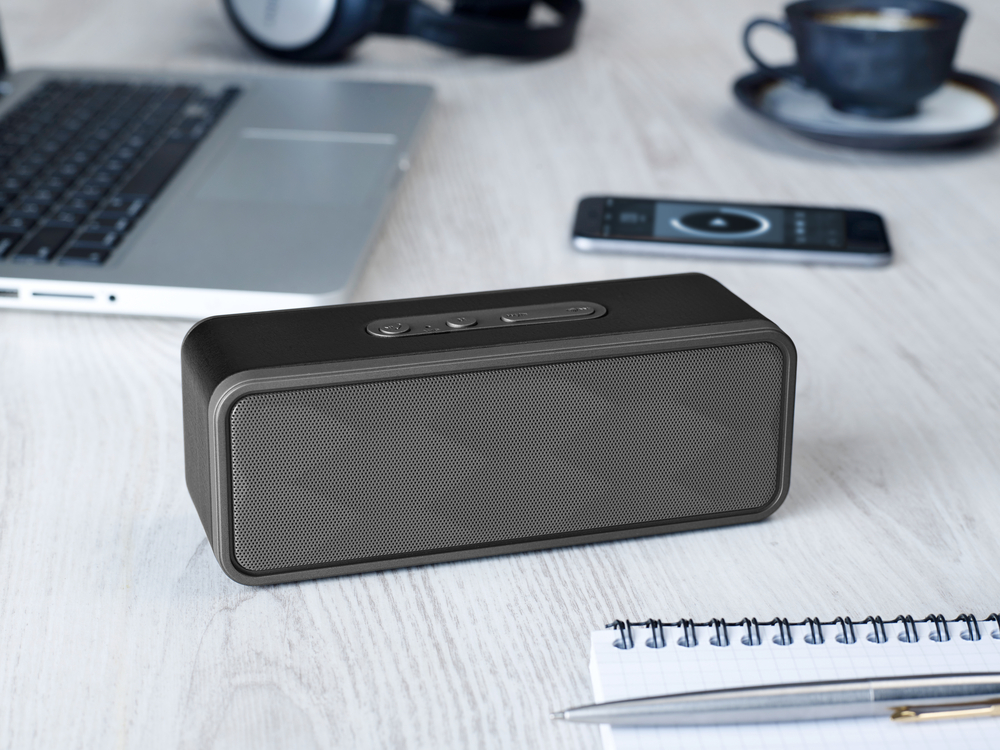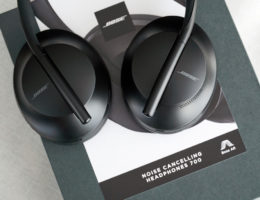Bluetooth technology has revolutionized how we interact with our devices. It affords convenience and cord-free entertainment. Many people have become enamored with the idea of using Bluetooth speakers for their indoor and outdoor entertainment. However, to get the best sound results, it helps to know how the technology functions. If you have wondered how Bluetooth speakers work, you have come to the right place.
How Do Bluetooth Speakers Work?
The short answer to how Bluetooth speakers work is that they use vibration, electricity, and magnetism to conduct information. Sound is able to travel through all forms of matter, whether solid, liquid, gas, and even plasma. Bluetooth technology exploits that ability. Combined with radio waves or infrared signals, the effect is a wireless transmission of sound from your device to the Bluetooth speaker.
In the new world of wireless technology, one of the reasons Bluetooth speakers work well, even in homes where walls could theoretically seem like a barrier, is because radio waves rather efficiently pass through solids. The richness of the sound a speaker can provide is completely dependent on the presence of enough air particles for the waves to collide with.
The best way to understand how Bluetooth speakers work is to start with a basic understanding of how sound operates. Sound is nothing more than our perception of various vibrations. As objects within our Earth’s atmosphere vibrate, they cause a disruption in the air molecules they are in contact with. The chain reaction started is perceived as sound. To get the most out of your Bluetooth speaker and understand how it works in greater depth, continue reading.
Understanding Sound
To illustrate the push and pull that causes sound, we can use a simple instrument like a bell—the sound we perceive as ringing is actually the inward and outward flexing of the bell’s surface. The reaction of the surrounding air molecules is to pull toward the bell on an inward flex, which in turn pulls more molecules. The decreasing air pressure of the area is called rarefaction.
As the inverse happens, expansion outward from the vibration, a wave of air pressure fluctuations occurs. The wave dissipates after some distance. The length of that distance depends on the strength of the wave.
For those standing in the range of the wave created, your eardrum picks up on the pressure change and vibrates. As the tiny bones in your middle ear react to the surrounding vibrations caused by changes in the air pressure, the fluid-filled cochlea bounces against tiny hairs in your ear and alerts your brain to begin interpreting sound.
As mentioned before, the individual parts of the sound you hear, such as its strength, pitch, et cetera, is determined by how quickly and forcefully the surrounding air molecules bump into each other. The more forceful the reaction, the louder the sound. The faster the fluctuation, the higher the pitch.
Using our earlier example, that is the reason most bells have a higher pitch, while gongs have a deeper pitch. You can help enhance the quality of your portable Bluetooth speakers’ sound when you know how the environment will affect its richness. Now that we have a basic understanding of how sound works, let us look into how this relates to the speaker itself.
Traditional and Bluetooth Speaker Basics
To understand the answer to the question “how do Bluetooth speakers work?” we have to know a bit about speakers themselves. Speakers have several important parts. The cone, also called a diaphragm, is the vibrational component that makes sound. Cones have a flexible surface that is easily pushed or pulled to create the reaction we discussed in the previous section.
In the center of the cone, there is an electromagnet voice coil. Behind the voice coil, on the opposite side of the cone, is essentially a permanent magnet that is capable of maintaining its magnetic field without electricity. The use of two magnets allows your Bluetooth speaker to cause an atmospheric reaction more rapidly.
Speakers also have an amplifier. In traditional wired speakers, the amplifier receives a flow of electricity from the audio source, for example, a stereo system, via two wires. As the flow of electricity alternates to the speakers through the wires, the electromagnet’s poles switch. Bluetooth speakers have to mimic that same reaction without the benefit of wires. The question is, how do they do that?
Since Bluetooth speakers have no direct connection to the stereo device, this age smart device depends on the system sending a signal. The signal that is sent is converted to electricity by the speaker so the voice coil can use it. The reaction is supported in a few different ways; one of those is via infrared. Infrared is a type of light that cannot be seen by humans because it lies outside of our spectrum of visible light. Systems that utilize this method work by the stereo transmitting a beam of infrared light to the speaker.
Infrared Transmission
The transmitters main job is to take the fluctuations of electricity that would have been present in a wired speaker and convert them into an infrared beam.
The beam pulsates to carry the sound information to the Bluetooth speaker. Infrared systems move very quickly, sending out millions of pulses per second. Some Bluetooth speakers are designed with sensors to detect the infrared transmissions. The electronic signals received are relayed to the amplifier.
The amplifier’s job is to raise the strength of the sensor’s output. It is an essential component, as, without it, the signals received would not be strong enough to drive the voice coil.
The series of events listed above are why even Bluetooth speakers require either a battery and/or cord to operate.
It is worth noting that one of the major disadvantages to infrared is that such systems only work when within a line of sight. Also, infrared transmissions need a direct line of sight. Any disruption in the communication will stop the signal. It is for that reason radio waves are more commonly used in Bluetooth speakers.
Radio Wave Transmission
Radio wave transmission is a far more effective and reliable way to transmit a signal to wireless speakers. The overall mechanism for signal transfer is the same; however, radio waves do not require the direct line of sight like infrared and have a more stable signal. Nevertheless, even radio waves have their drawbacks.
Although it is a rare occurrence, radio signals can be interrupted and intercepted. Interruptions can occur even when your Bluetooth speaker is not outside of the transmitting device’s range. This is because there are countless devices that emit radio waves. On rare occasions, there may be radio waves that have the same frequency as your transmitting device and speakers. That can lead to garbled signals. It is also possible for the signal to drop or cut out. The latter problem is perhaps the most commonly experienced issue.
Advantages and Disadvantages of Bluetooth Speakers
The biggest advantage of a Bluetooth speaker system is that it can be used almost anywhere. The best Bluetooth speakers are portable wireless Bluetooth speakers and operate cordlessly for a period of time because they are outfitted with a rechargeable battery.
A great example of a high-quality Bluetooth speaker is the Bose SoundlinkRevolve+. This is widely considered one of the highest-quality, battery-powered speakers available. Most Bluetooth speakers and headphones work well with Android cellphones as well as The Apple iPhone, or really any other smartphone.
Most of today’s smartphones double as Bluetooth devices, so it is easy to find compatibility between phones and portable speakers. This Bose model offers incredible audio output, as well as audio quality in short-range connections such as in a wi-fi network like a living room.
Despite their benefits, Bluetooth speakers do have some drawbacks. Their range is limited, and when a speaker is situated on the very limits of the signal range, the sound quality may suffer. True audiophiles may be more critical of the sound Bluetooth speakers produce because the quality of a corded system is hard to match. It is also worth noting even Bluetooth Speakers have to be powered, so whether you are charging its battery or plugging it into a wall, some cord use is unavoidable.
Bandwidth can also pose an issue. While all Bluetooth speakers are faced with bandwidth challenges, it can be especially so with cheaper models. The reason bandwidth is an issue is because it’s simply not possible, with our current technology, to transmit as much information through a wireless transmission as is possible via wires. Not even close. The result is music that is less rich in sound. The loss of sound quality is more obvious with some Bluetooth speakers than others.
How Do Bluetooth Speakers Work?
We hope we have answered the question “how do Bluetooth speakers work” in a way that makes things clear for you. There is a lot more to know than what we have time for in this article, but the information provided here is designed to help you pick the best speaker for your needs. It should also help you maximize the effectiveness and sound quality of your audio set up. In the end, wired systems do have an immense sound advantage over even the best of Bluetooth speakers, but as technology advances, they may soon become a thing of the past.
Where Bluetooth speakers win is the portability, flexibility, and freedom that comes with their use. They are not limited to functioning only with stereo systems, and they can be paired with almost any Bluetooth capable device your favorite music selections are on. How do Bluetooth speakers work? In many ways, the right answer is: “for the user’s convenience.”




